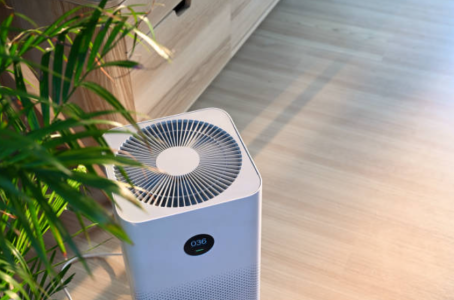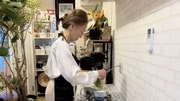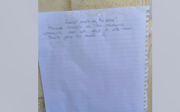Are Your Indoor Air Purifiers Really Protecting You from Dangerous Smoke? Here’s What You Need to Know
By
Gian T
- Replies 0
As the chill of winter sets in and bushfire season looms on the horizon, many Australians find themselves retreating indoors, hoping to escape the smoky haze that can blanket our towns and cities. But how safe are we really behind closed doors? And can those trusty indoor air purifiers truly protect us from the dangers of wood heater and bushfire smoke?
Let’s clear the air (pun intended!) and dive into what the experts say, what you can do to protect your health, and some practical tips for keeping your home as smoke-free as possible.
First things first: just because wood smoke smells 'natural' doesn’t mean it’s harmless. In fact, the tiny particles produced by burning wood—known as PM2.5—are so small (2.5 microns or less) that they can slip deep into your lungs and even enter your bloodstream. These particles are linked to a range of health issues, from asthma flare-ups to heart attacks, and are especially risky for older adults, young children, pregnant women, and anyone with heart or lung conditions.
And it’s not just bushfires that are the culprit. In many parts of Australia, the humble wood heater is a major source of wintertime smoke pollution. Even if you don’t have one, your neighbour’s wood fire can send smoke drifting into your home through cracks, vents, and even the tiniest gaps in your windows and doors.
The good news: air purifiers can help. The not-so-good news: their effectiveness can vary quite a bit.
Recent research shows that portable air purifiers can remove anywhere from 54 per cent to 92 per cent of those nasty PM2.5 particles from indoor air. The best results come from units fitted with HEPA (High-Efficiency Particulate Air) filters, which are also great at trapping pollen, dust, mould spores, bacteria, and even some viruses.
But here’s the catch: how well your air purifier works depends on more than just the filter. The 'leakiness' of your home plays a big role. Many Aussie homes—especially older ones—aren’t exactly airtight, which means smoke can keep sneaking in, making it harder for your purifier to keep up.
For example, an Australian study found that HEPA filter purifiers removed between 30 per cent and 74 per cent of PM2.5 during a controlled burn. In the US, where homes are often better sealed, the effectiveness ranged from 50 per cent to 77 per cent. So, if you live in a draughty old Queenslander, you might need to do a bit more than just plug in a purifier.
If you’re handy, you might have seen DIY air purifier projects online—usually a box fan with a high-quality filter taped to the back. While these haven’t been as thoroughly tested as commercial units, early evidence suggests they can be surprisingly effective, especially in a pinch or during a smoke emergency.
If your house is a bit on the 'leaky' side, don’t despair! There are simple steps you can take to keep smoke out:
- Seal gaps around doors and windows with weather stripping or draft stoppers.
- Close fireplace dampers and unused vents.
- Use heavy curtains to help block drafts.
- Keep windows and doors closed during smoky periods.
But don’t forget: when the air outside clears, open up and let your home breathe! Otherwise, you might end up with worse air inside than out. Handy apps like AirRater can help you track outdoor air quality, and many purifiers have built-in sensors to monitor indoor air.
Air purifiers aren’t cheap—some models can set you back over $1,000, though you can find decent ones for a few hundred dollars. To get the most bang for your buck, focus on the rooms where you spend the most time, like the lounge or bedroom.
A few things to consider:
- Bigger purifiers can clean larger spaces but may be noisier (check the decibel rating—30dB is a whisper, 60dB is a conversation).
- You might want a larger unit for the living area and a smaller, quieter one for the bedroom.
- Don’t forget to factor in the cost of replacement filters—some can cost over $200 a year!
While research on using air purifiers for wood heater smoke is still limited, there are steps you can take to reduce emissions:
- Check your chimney for visible smoke—less is better.
- Clean your flue before winter.
- Burn only dry, seasoned wood (it should sound sharp and resonant when tapped).
- Don’t overload the fire and then cut off the air supply—this causes smouldering and more smoke.
Clean air advocates are calling for tighter standards on wood heaters and more low-emission technologies. But until those changes come, it’s up to us to do what we can to protect our homes and our health.
If you want to learn more, the University of Tasmania offers a free online course on reducing health risks from bushfires—well worth a look!

Have you tried using an air purifier during bushfire season or when your neighbour’s wood heater is working overtime? Do you have any clever hacks for sealing up a leaky house? Or maybe you’ve built your own DIY air cleaner? We’d love to hear your stories, tips, and questions in the comments below—let’s help each other breathe a little easier this winter!
Read more: ‘This place is a death trap’: One woman’s homebuying nightmare is a warning to us all
Let’s clear the air (pun intended!) and dive into what the experts say, what you can do to protect your health, and some practical tips for keeping your home as smoke-free as possible.
First things first: just because wood smoke smells 'natural' doesn’t mean it’s harmless. In fact, the tiny particles produced by burning wood—known as PM2.5—are so small (2.5 microns or less) that they can slip deep into your lungs and even enter your bloodstream. These particles are linked to a range of health issues, from asthma flare-ups to heart attacks, and are especially risky for older adults, young children, pregnant women, and anyone with heart or lung conditions.
And it’s not just bushfires that are the culprit. In many parts of Australia, the humble wood heater is a major source of wintertime smoke pollution. Even if you don’t have one, your neighbour’s wood fire can send smoke drifting into your home through cracks, vents, and even the tiniest gaps in your windows and doors.
The good news: air purifiers can help. The not-so-good news: their effectiveness can vary quite a bit.
Recent research shows that portable air purifiers can remove anywhere from 54 per cent to 92 per cent of those nasty PM2.5 particles from indoor air. The best results come from units fitted with HEPA (High-Efficiency Particulate Air) filters, which are also great at trapping pollen, dust, mould spores, bacteria, and even some viruses.
But here’s the catch: how well your air purifier works depends on more than just the filter. The 'leakiness' of your home plays a big role. Many Aussie homes—especially older ones—aren’t exactly airtight, which means smoke can keep sneaking in, making it harder for your purifier to keep up.
For example, an Australian study found that HEPA filter purifiers removed between 30 per cent and 74 per cent of PM2.5 during a controlled burn. In the US, where homes are often better sealed, the effectiveness ranged from 50 per cent to 77 per cent. So, if you live in a draughty old Queenslander, you might need to do a bit more than just plug in a purifier.
If you’re handy, you might have seen DIY air purifier projects online—usually a box fan with a high-quality filter taped to the back. While these haven’t been as thoroughly tested as commercial units, early evidence suggests they can be surprisingly effective, especially in a pinch or during a smoke emergency.
If your house is a bit on the 'leaky' side, don’t despair! There are simple steps you can take to keep smoke out:
- Seal gaps around doors and windows with weather stripping or draft stoppers.
- Close fireplace dampers and unused vents.
- Use heavy curtains to help block drafts.
- Keep windows and doors closed during smoky periods.
But don’t forget: when the air outside clears, open up and let your home breathe! Otherwise, you might end up with worse air inside than out. Handy apps like AirRater can help you track outdoor air quality, and many purifiers have built-in sensors to monitor indoor air.
Air purifiers aren’t cheap—some models can set you back over $1,000, though you can find decent ones for a few hundred dollars. To get the most bang for your buck, focus on the rooms where you spend the most time, like the lounge or bedroom.
A few things to consider:
- Bigger purifiers can clean larger spaces but may be noisier (check the decibel rating—30dB is a whisper, 60dB is a conversation).
- You might want a larger unit for the living area and a smaller, quieter one for the bedroom.
- Don’t forget to factor in the cost of replacement filters—some can cost over $200 a year!
While research on using air purifiers for wood heater smoke is still limited, there are steps you can take to reduce emissions:
- Check your chimney for visible smoke—less is better.
- Clean your flue before winter.
- Burn only dry, seasoned wood (it should sound sharp and resonant when tapped).
- Don’t overload the fire and then cut off the air supply—this causes smouldering and more smoke.
Clean air advocates are calling for tighter standards on wood heaters and more low-emission technologies. But until those changes come, it’s up to us to do what we can to protect our homes and our health.
If you want to learn more, the University of Tasmania offers a free online course on reducing health risks from bushfires—well worth a look!
Key Takeaways
- Portable air purifiers fitted with HEPA filters can remove a significant amount of smoke particles (PM2.5) from indoor air, but their effectiveness varies widely depending on factors like house 'leakiness' and filter quality.
- If you live in a 'leaky' or older Australian house, it’s important to seal gaps where possible and monitor both indoor and outdoor air quality, using apps or built-in sensors, to reduce smoke exposure.
- For best results, target rooms where people spend the most time with appropriately sized purifiers, check noise levels, and be mindful of ongoing filter replacement costs.
- Experts recommend avoiding ionic or ozone-generating air purifiers due to potential health risks, using only dry, seasoned wood if you have a wood heater, and reducing other indoor sources of pollution like incense, candles, and gas burners.
Read more: ‘This place is a death trap’: One woman’s homebuying nightmare is a warning to us all








